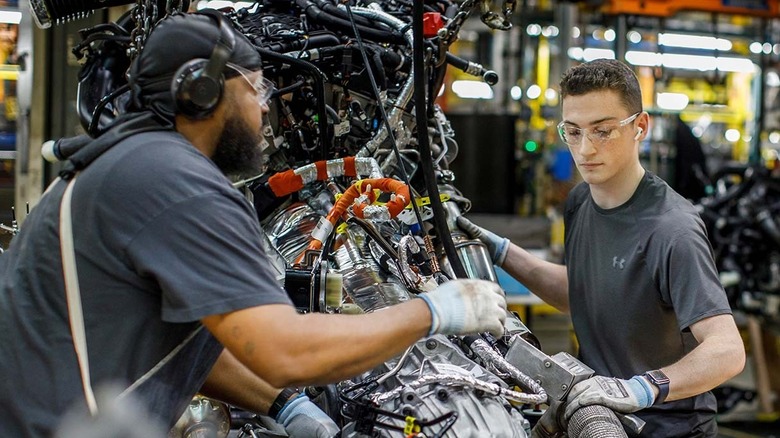2.7 Vs 3.5 EcoBoost: What Are The Differences Between These Engines?
Ford's EcoBoost lineup has always maintained a balance between power and efficiency, but when it comes to the 2.7-liter and 3.5-liter EcoBoost engines, that balance tilts in different directions. Both are twin-turbo V6s, but they serve slightly different purposes, depending on what you're looking for. For instance, one would be better for a good daily driving experience, while the other one for towing or pure performance. While it's easy to assume the bigger engine is always better, that's not really the full story here.
These two engines show up in trucks like the Ford F-150, and both have different target customers. Some owners love the lighter feel and surprising pull of the 2.7, while others swear by the towing muscle of the 3.5. That being said, you should go with the one that serves your needs completely. To figure that out, you've got to dig into how they're built and how they behave on the road.
Power, response, and real-world performance
Let's start with the numbers. The 2.7-liter EcoBoost puts out around 325 horsepower and 400 lb-ft of torque. When you compare it to the 3.5-liter EcoBoost, it bumps up to as much as 450 hp and 510 lb-ft in high-output versions.
As a result of that extra power, you get better acceleration — around 5.3 seconds to 60 mph, while the 2.7-liter takes roughly six seconds in comparison. In regular driving, especially in city traffic, the 2.7-liter actually feels more responsive, all thanks to its smaller turbos that spool quicker.
In terms of which F-150 engine is best for towing, the 3.5-liter wins hands down. It's more comfortable with pulling heavier loads, and it doesn't feel like it's working as hard as the 2.7-liter. The 2.7 can still tow up to 10,100 lbs with the right setup, but it tends to struggle a bit on steep grades or long uphill hauls when it's near its limit.
Especially in terms of the newer F-150s, the 3.5-liter makes towing feel like a breeze. However, the 3.5-liter does have its quirks. Turbocharger and ignition issues can pop up over time, especially in trucks used heavily for towing. Cam phaser noise on cold starts is another known issue.
Fuel efficiency and day-to-day driving
If fuel costs are a concern — and for most truck owners, they are — the 2.7-liter is the more efficient choice. For instance, according to the EPA, the 2024 version is rated for about 18 MPG in the city and 23 on the highway in the 4WD-equipped F-150. On the other side, the 2024 Ford F-150 3.5-liter isn't far behind on paper, with EPA estimates of 16 MPG in the city, 24 on the highway, and 19 in mixed driving.
That said, if you're towing or carrying heavy loads regularly, you'll see that number drop fast. The 2.7 also costs a bit less to maintain overall, thanks to better mileage and a simpler design.
In day-to-day driving, moving around with 2.7-liter EcoBoost feels a bit more nimble, and you get better balance and a nicer steering feel. In addition to that, the drive feels quiet, smooth, and it handles stop-and-go traffic with ease.
While the 3.5-liter can feel a bit rougher at idle, once you hit the gas, its quick acceleration and torque-rich power delivery make it perfect for highways or long road trips too. Both engines need routine oil changes every 5,000 to 7,500 miles, and timely spark plug changes. While the early 2.7 engines had some timing chain issues, they've been less common in newer models.


